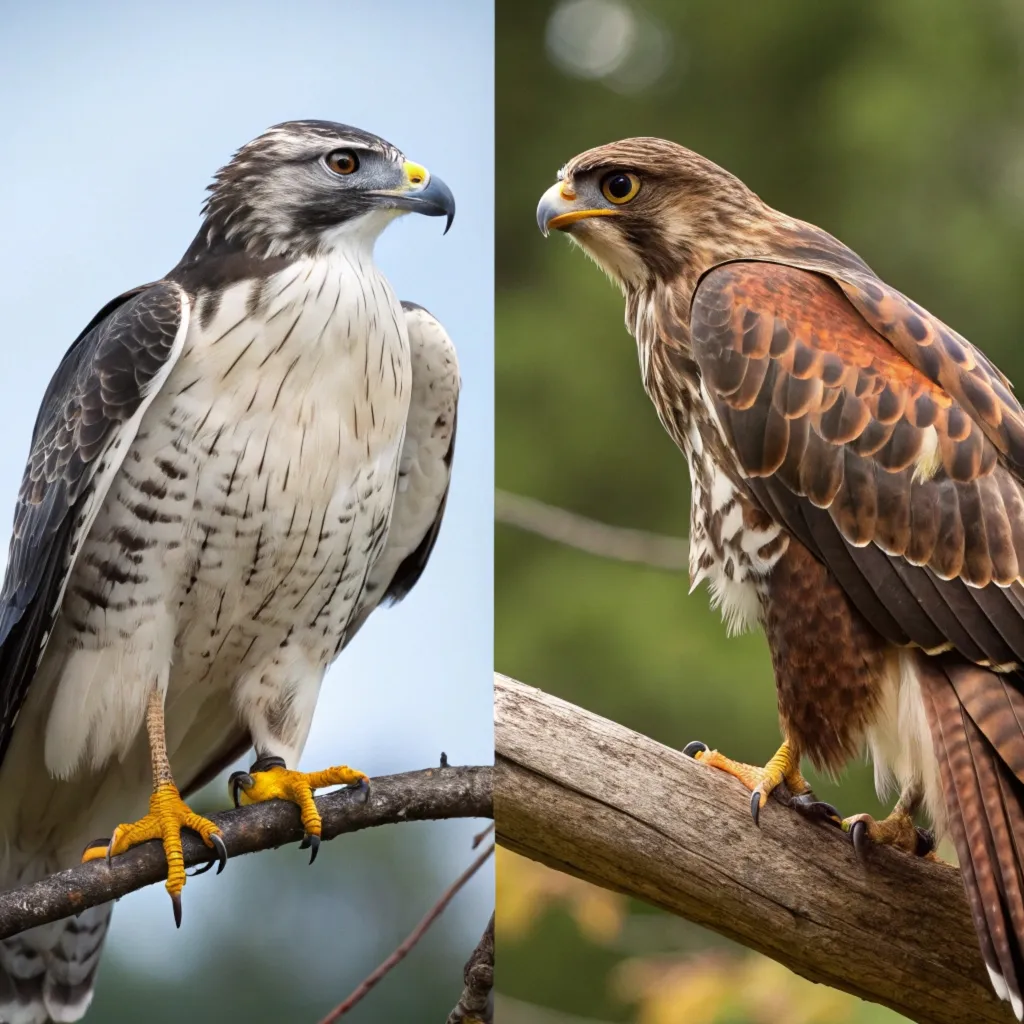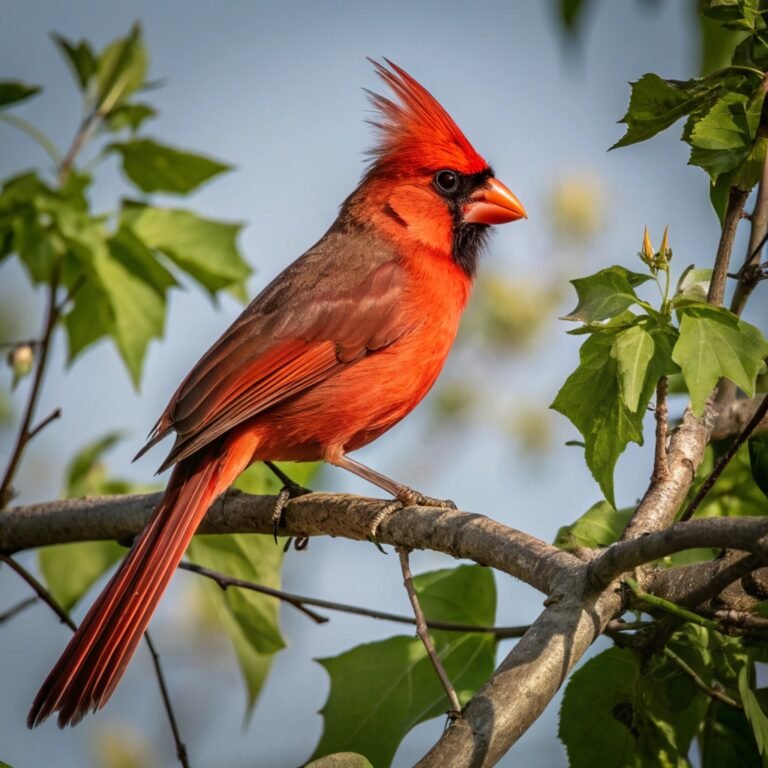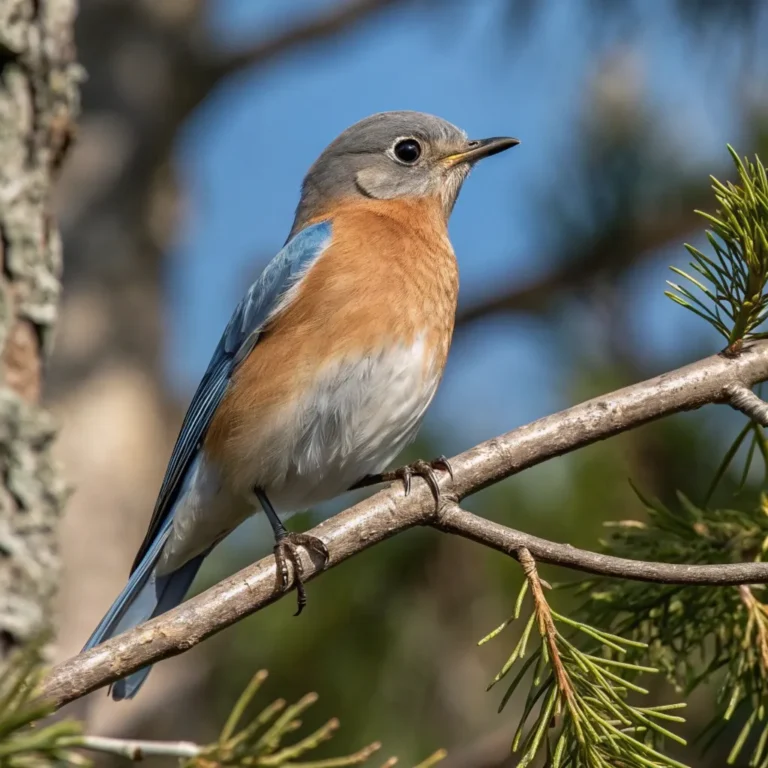Falcon vs Hawk: Unveiling the Distinct Features of These Aerial Predators
Birds of prey captivate our imagination with their power and grace. Among these, falcons and hawks stand out as remarkable hunters.
While they may seem similar at first glance, these birds have unique characteristics that set them apart.
This article explores the key differences between falcons and hawks, shedding light on their physical features, hunting techniques, and habitats.
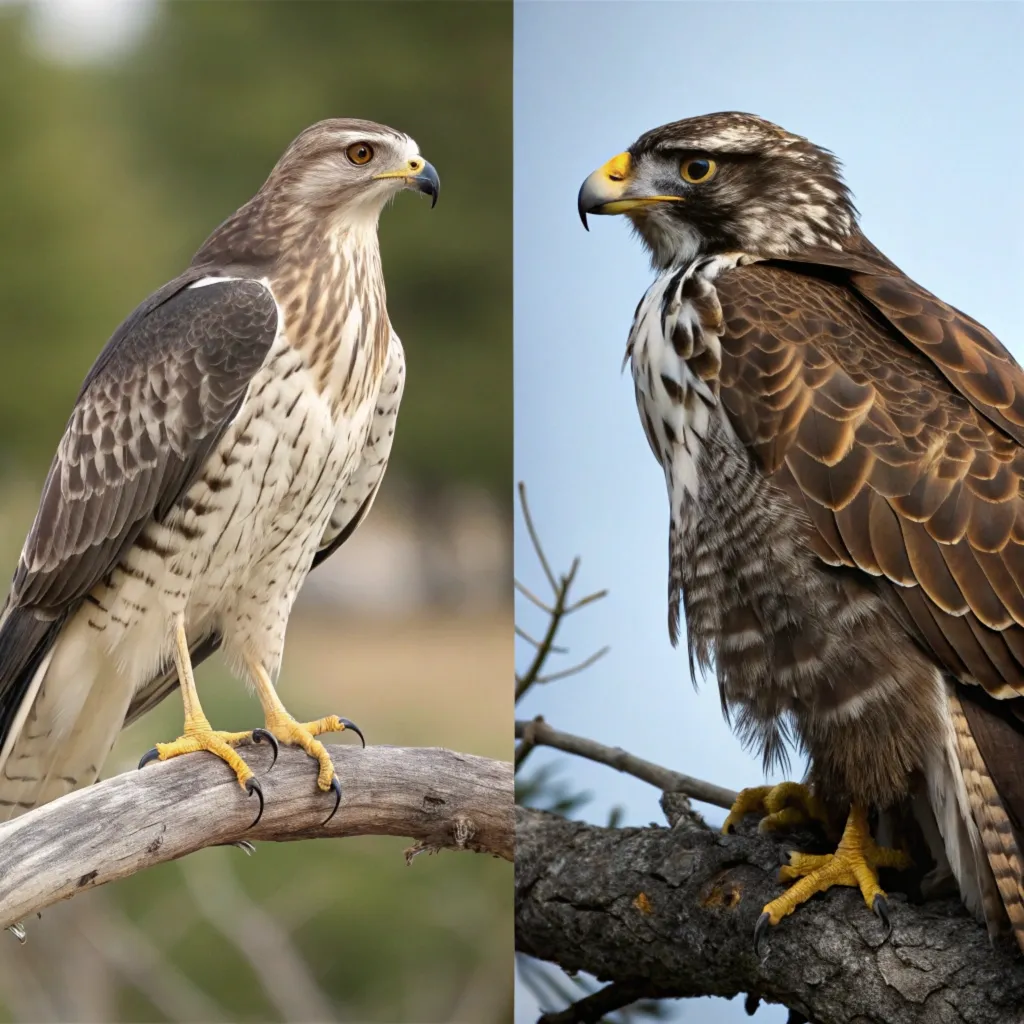
Key Takeaways
- Physical Differences: Falcons have streamlined bodies and pointed wings, while hawks have broader wings and larger bodies.
- Hunting Techniques: Falcons use speed and agility for aerial pursuits, hawks rely on strength and gliding for capturing prey.
- Habitat Preferences: Falcons adapt to various environments, including urban areas, while hawks favor wooded regions and open fields.
- Speed: Falcons, especially peregrine falcons, can reach speeds up to 200 mph, surpassing hawks’ maximum speed of 120 mph.
- Killing Methods: Falcons use their beaks to deliver fatal bites, while hawks rely on their powerful talons to subdue prey.
- Head Shape: Falcons have round, short heads, whereas hawks possess slender, pointy heads.
- Conservation: Both species face challenges, but conservation efforts aim to protect their populations and habitats.
The world of raptors is a fascinating realm of aerial prowess and hunting expertise.
Falcons and hawks, while both formidable predators, have evolved distinct characteristics that make them uniquely adapted to their environments and hunting styles.
Understanding these differences not only enhances our appreciation for these magnificent birds but also helps in their conservation and protection.
Physical Characteristics
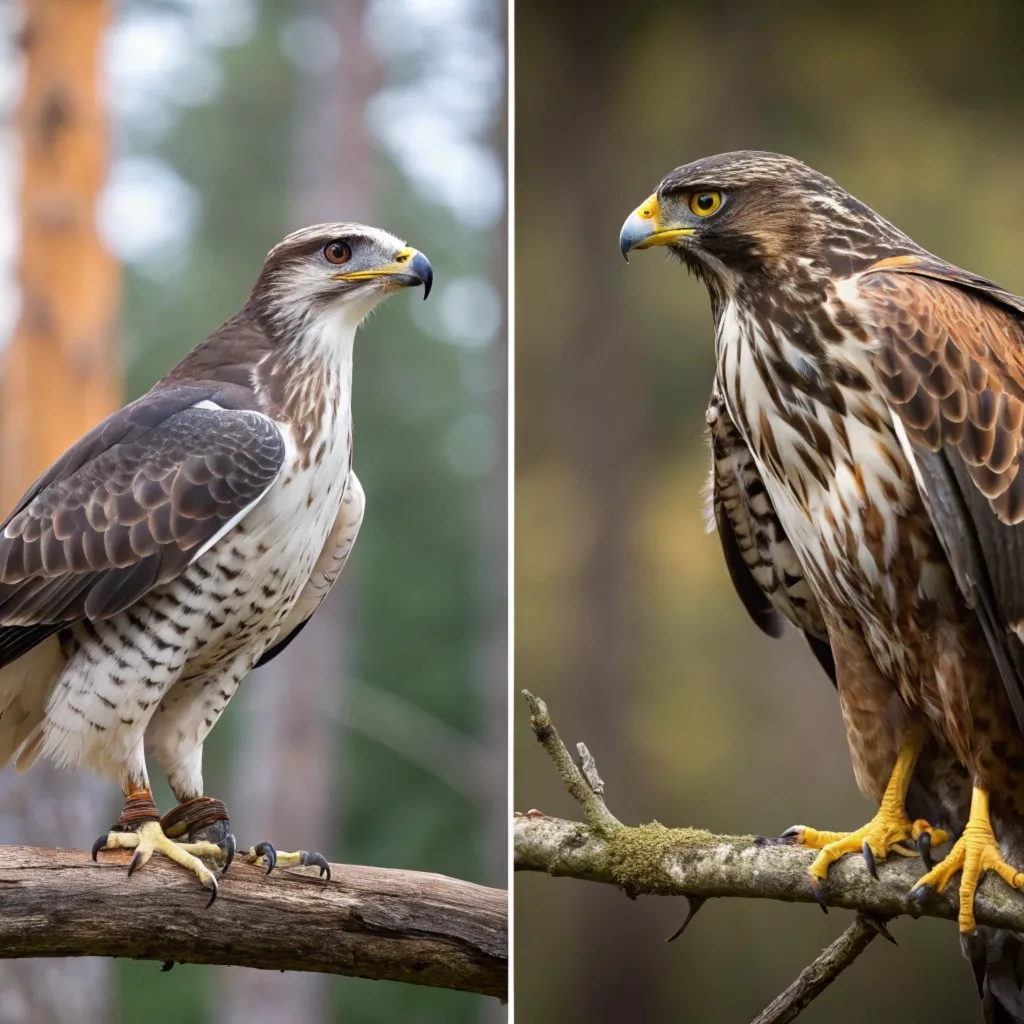
Size and Body Shape
Falcons and hawks differ in their physical build. Hawks have larger bodies, ranging from 8 to 30 inches in length. Falcons, in contrast, are smaller to medium-sized birds, measuring 8 to 26 inches. The compact structure of falcons aids in their swift aerial maneuvers.
The evolutionary adaptations of these birds have resulted in body shapes perfectly suited to their hunting strategies. Falcons’ streamlined bodies allow for incredible speed and agility, while hawks’ larger frames provide the strength needed for their hunting techniques.
Observing these differences in the wild can be a thrilling experience for birdwatchers, offering insights into the diverse ways nature has equipped these predators for survival.
Wing Structure
The wing shape of these birds reflects their hunting strategies. Falcons possess long, slender, and pointed wings designed for speed and agility. Hawks, on the other hand, have broader, rounded wings that enable them to glide and soar effortlessly.
Wing structure plays a crucial role in the flight patterns and hunting techniques of these birds. The falcons’ pointed wings allow for rapid acceleration and precise maneuvering, while hawks’ broader wings provide stability and efficiency in soaring flight.
Understanding wing shapes can help bird enthusiasts identify these raptors even from a distance, enhancing the birdwatching experience.
Head and Beak Shape
Falcons have round, short heads with a unique “tooth” on their beaks. This adaptation helps them deliver precise, fatal bites to their prey. Hawks feature slender, pointy heads with strong, hooked beaks suited for tearing flesh.
The beak structure of these birds is a testament to their hunting strategies. Falcons’ beaks are designed for quick, efficient kills, while hawks’ beaks are adapted for tearing apart larger prey.
Recognizing these head and beak differences can be key in identifying falcons and hawks in the field, providing valuable insights into their behavior and diet.
Feather Color and Patterns
While both birds display various colors, falcons often have consistent brown or gray plumage with distinctive facial patterns. Hawks exhibit a wider range of feather patterns, including speckled or streaked brown and white combinations.
Plumage variations in these birds serve multiple purposes, from camouflage to species recognition. The diversity in feather patterns among hawks reflects their adaptation to various habitats and hunting strategies.
Observing feather colors and patterns can be a rewarding aspect of birdwatching, offering clues about the species, age, and even the health of the bird.
Hunting Techniques
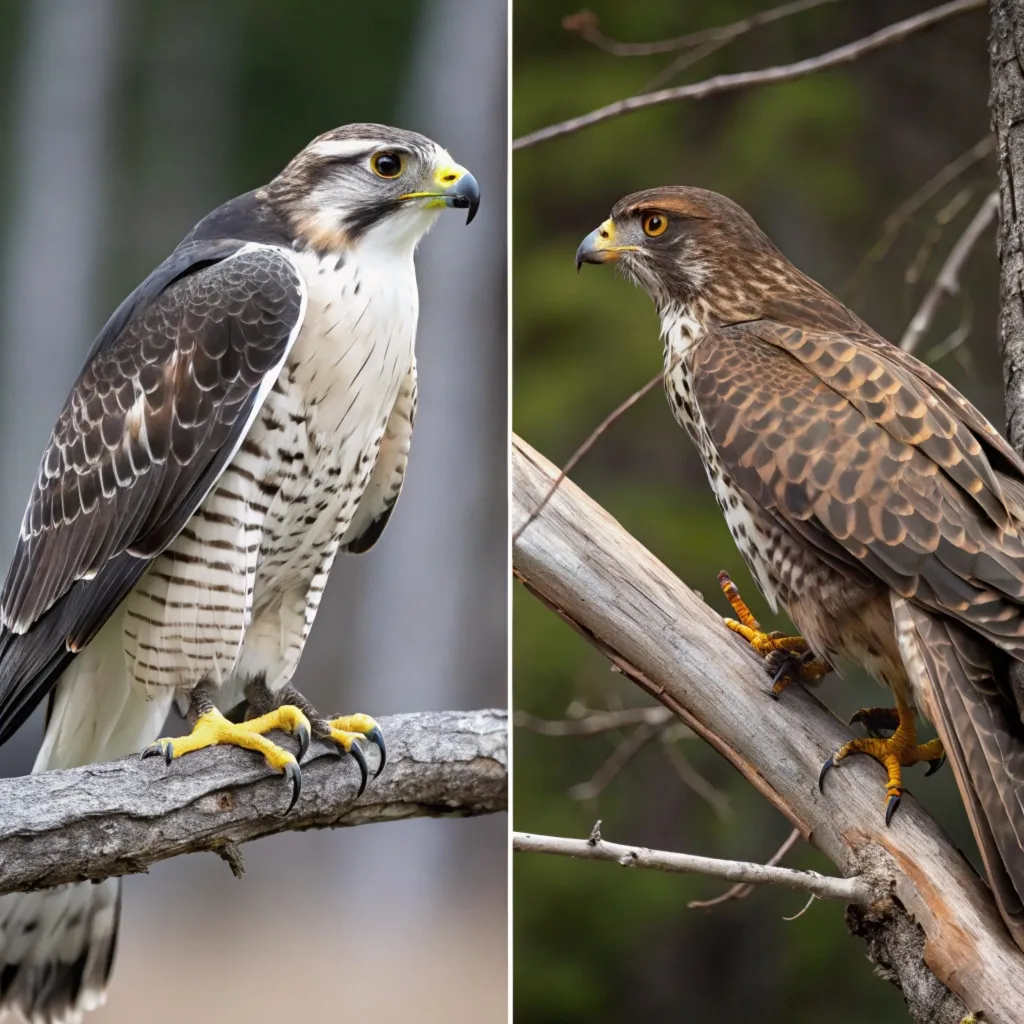
Falcon Hunting Style
Falcons are built for speed and precision. They use rapid, powerful wing beats and can achieve incredible speeds during hunting dives. The peregrine falcon, for instance, can reach speeds of up to 200 mph when pursuing prey.
The hunting prowess of falcons is a marvel of nature. Their ability to achieve such high speeds allows them to catch fast-flying birds in mid-air, a feat that few other predators can match.
Witnessing a falcon’s dive is an awe-inspiring experience, showcasing the pinnacle of avian hunting techniques.
Hawk Hunting Approach
Hawks employ a different strategy. They glide or hover while scanning for prey, using thermal currents to stay aloft with minimal effort. Their powerful talons allow them to grasp and subdue prey effectively.
Hawks’ hunting methods demonstrate a more patient approach compared to falcons. Their ability to soar for extended periods allows them to cover large areas while conserving energy.
Observing hawks in flight reveals their mastery of air currents, a skill that makes them efficient hunters in diverse landscapes.
Habitat and Distribution
Falcon Habitats
Falcons demonstrate remarkable adaptability. They thrive in diverse environments, including grasslands, deserts, polar tundras, and urban areas. Their ability to nest on tall buildings has allowed them to colonize cities successfully.
The versatility of falcons in adapting to various habitats is a testament to their resilience. Their presence in urban environments highlights the potential for wildlife to coexist with human development.
Urban falcons have become a symbol of nature’s adaptability, offering city dwellers a chance to observe these magnificent birds in unexpected settings.
Hawk Habitats
Hawks prefer areas with high perches and open spaces. They commonly inhabit wooded regions, open fields, and mountainous areas. Some species, like the Cooper’s Hawk, have adapted to suburban environments.
The habitat preferences of hawks reflect their hunting strategies and prey availability. Their presence in diverse ecosystems underscores their importance in maintaining ecological balance.
Suburban hawks demonstrate the adaptability of these birds, finding new niches in human-altered landscapes.
Speed and Flight Patterns
Falcon Speed
Falcons are renowned for their incredible speed. The peregrine falcon can dive at speeds exceeding 200 mph, making it the fastest animal on Earth. Their streamlined bodies and pointed wings contribute to this remarkable velocity.
The extraordinary speed of falcons is not just a marvel of nature but also a crucial adaptation for their hunting success. This ability allows them to catch prey that would otherwise be too swift for other predators.
Studying falcon flight has inspired innovations in aerodynamics, showcasing how nature’s designs can inform human technology.
Hawk Speed
While not as fast as falcons, hawks are still impressive flyers. They can reach speeds of up to 120 mph during hunting dives. Hawks excel in soaring and gliding, using thermal currents to conserve energy while searching for prey.
The flight patterns of hawks demonstrate a different kind of mastery over the air. Their ability to soar efficiently allows them to patrol large territories with minimal energy expenditure.
Observing hawks in flight reveals the grace and efficiency of their movements, a sight that continues to captivate birdwatchers and nature enthusiasts.
Killing Methods
Falcon Killing Technique
Falcons use their beaks as their primary weapon. The notch or “tooth” on their beak allows them to sever the spinal cord of their prey quickly and efficiently.
The specialized beak of falcons is a remarkable adaptation that enables them to make swift, precise kills. This method minimizes suffering for their prey and conserves energy for the falcon.
Understanding falcon hunting techniques provides insights into the evolutionary arms race between predator and prey in the avian world.
Hawk Killing Approach
Hawks rely on their powerful talons to capture and kill prey. Their strong feet and sharp claws enable them to grasp and subdue their targets effectively.
The hunting strategy of hawks showcases a different approach to predation. Their powerful grip allows them to tackle a wider range of prey sizes compared to falcons.
Observing hawk hunting behavior reveals the importance of strength and precision in their predatory success.
Conservation Status
Both falcons and hawks face challenges in the modern world. Habitat loss, pesticide use, and human interference impact their populations.
Conservation efforts focus on protecting their habitats and raising awareness about these magnificent birds of prey.
The conservation status of these birds serves as an indicator of overall ecosystem health. Efforts to protect falcons and hawks often benefit a wide range of other species sharing their habitats.
Supporting conservation initiatives for these raptors can contribute to maintaining biodiversity and ecological balance in various ecosystems.
Ecological Roles
Falcons and hawks play crucial roles in their ecosystems. As apex predators, they help control populations of smaller animals, maintaining a balance in nature. Their presence often indicates a healthy environment.
The ecological importance of these raptors extends beyond their role as predators. They also serve as indicators of environmental health, with their populations reflecting the overall condition of their habitats.
Studying the ecological roles of falcons and hawks provides valuable insights into ecosystem dynamics and the interconnectedness of species.
Nesting Habits
Falcon Nesting
Falcons typically choose high locations for nesting, such as cliff ledges or tall buildings. They often use simple scrapes or existing ledges rather than building elaborate nests.
The nesting preferences of falcons reflect their adaptation to various environments, including urban settings. Their ability to nest on man-made structures has contributed to their success in colonizing cities.
Urban falcon nests have become subjects of fascination, often monitored by webcams that allow the public to observe these birds up close.
Hawk Nesting
Hawks construct large, sturdy nests in tall trees or on cliffs. They often reuse and expand their nests year after year, resulting in massive structures over time.
The nest-building behavior of hawks demonstrates their commitment to a specific territory. These large nests can become focal points for birdwatchers and researchers studying hawk populations.
Long-term hawk nests can provide valuable data on breeding success and population trends over time.
Behavioral Differences
Falcon Behavior
Falcons are known for their agility and speed in flight. They form strong pair bonds and use high-pitched vocalizations for communication.
The social behavior of falcons offers insights into their complex lives beyond hunting. Their strong pair bonds and communication methods play crucial roles in their breeding success.
Observing falcon interactions can provide birdwatchers with a deeper appreciation for the social dynamics of these impressive raptors.
Hawk Behavior
Hawks tend to be more vocal and solitary. They exhibit strong territorial instincts and use loud calls to establish their presence and ward off intruders.
The territorial nature of hawks influences their distribution and population dynamics. Understanding these behaviors is crucial for conservation efforts and habitat management.
Listening to hawk calls can be an exciting way for nature enthusiasts to detect and identify these birds, even when they’re not visible.
Adaptations to Urban Environments
Both falcons and hawks have shown remarkable adaptability to urban settings. Peregrine falcons, in particular, have successfully colonized cities, nesting on skyscrapers and hunting pigeons.
Some hawk species, like Cooper’s Hawks, have also adapted to suburban areas, taking advantage of backyard bird feeders.
The urban adaptation of these raptors demonstrates nature’s resilience in the face of human development. It also presents unique opportunities for urban wildlife conservation and public engagement with nature.
Studying urban raptors can provide valuable insights into how wildlife adapts to human-dominated landscapes, informing urban planning and conservation strategies.
FAQs
What is the main difference between falcons and hawks?
Falcons have streamlined bodies with long, pointed wings for speed, while hawks have broader wings and larger bodies for soaring and gliding.
Which bird is faster, a falcon or a hawk?
Falcons are faster than hawks. Peregrine falcons can reach speeds of up to 200 mph during dives, while hawks typically max out at around 120 mph.
How do falcons and hawks differ in their hunting techniques?
Falcons use high-speed aerial pursuits and their beaks to kill prey, while hawks rely on gliding, powerful talons, and ambush tactics to capture their targets.
Where are falcons typically found?
Falcons can be found in various habitats, including grasslands, deserts, polar tundras, forests, and urban areas.
What habitats do hawks prefer?
Hawks are commonly found in wooded areas, open fields, and mountainous regions. They build their nests in tall trees or on cliffs.
What do hawks eat?
Hawks have a varied diet that includes small mammals, birds, reptiles, and insects. They are opportunistic hunters and can adapt to different food sources.
What do falcons eat?
Falcons primarily hunt other birds, which they catch in mid-air. They also eat small mammals, insects, and sometimes reptiles.

Joyce is the passionate founder of Chirping Hearts, a website dedicated to sharing her love for birds and providing valuable information about avian life. With a background in ornithology and years of experience in birdwatching, Joyce aims to inspire others to appreciate the beauty and diversity of birds. Through her engaging articles and guides, she hopes to foster a community of bird enthusiasts who share her enthusiasm for these incredible creatures. When she’s not writing, Joyce enjoys exploring nature trails and observing birds in their natural habitats.

